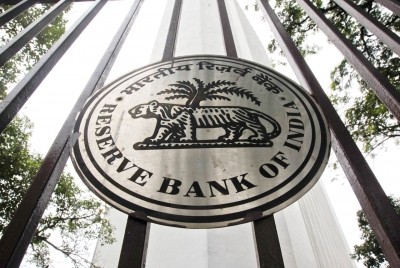
Chennai, As expected earlier, the Reserve Bank of India's Monetary Policy Committee (MPC) in a 5:1 decision increased the repo rate by 50 basis points to 5.90 on Friday.
The RBI Governor Shaktikanta Das, heading the MPC, announced the hike to subdue the inflation.
"Based on an assessment of the macroeconomic situation and its outlook, the MPC decided by a majority of five members out of six to increase the policy repo rate by 50 basis points to 5.9 per cent, with immediate effect," Das said.
"The MPC also decided by a majority of 5 out of 6 members to remain focused on withdrawal of accommodation to ensure that inflation remains within the target going forward, while supporting growth," he added.
The Monetary Policy Committee (MPC) met on September 28, 29 and 30.
"Consequently, the standing deposit facility (SDF) rate stands adjusted to 5.65 per cent; and the marginal standing facility (MSF) rate and the Bank Rate to 6.15 per cent," the RBI Governor said.
Explaining the rationale for hiking the policy rate, Das said the global economic outlook is bleak, recession fears are mounting, financial condition is tightening and inflation is high across the jurisdictions.
"Central banks are charting new territory with aggressive rate hikes, even if it entails sacrificing growth in the near term. In this milieu, nervous investor sentiments have triggered a flight to safety," Das said.
Emerging market economies (EMEs), in particular, are confronted with challenges of slowing global growth, elevated food and energy prices, spillovers from the advanced economy policy normalisation, debt distress and sharp currency depreciations, he added.
With consumer price inflation remaining elevated and above the upper tolerance band of the target due to large adverse supply shocks, some firming up of domestic demand, and the spillovers from global financial markets.
The recent correction in global commodity prices, including crude oil, if sustained, may ease cost pressures in the coming months. The inflation trajectory remains clouded with uncertainties arising from continuing geopolitical tensions and nervous global financial market sentiments, he said.
"In this backdrop, the MPC was of the view that the persistence of high inflation necessitates further calibrated withdrawal of monetary accommodation to restrain broadening of price pressures, anchor inflation expectations and contain the second round effects. This action will support medium-term growth prospects," Das said.
On the gross domestic product (GDP) growth, Das said the real GDP grew by 13.5 per cent (y-o-y) in Q1:2022-23, surpassing the prepandemic level by 3.8 per cent.
This was led by robust growth in private consumption and investment demand.
The economic activity is resilient and investment is picking up. The bank credit has increased. The capacity utilisation in the manufacturing sector has increased while merchandise exports are facing some headwinds.
According to him, the real GDP growth for 2022-23 is projected at 7 per cent with Q2 at 6.3 per cent; Q3 at 4.6 per cent; and Q4:2022-23 at 4.6 per cent, with risks broadly balanced. The growth for Q1:2023-24 is projected at 7.2 per cent.
On inflation, Das said the global geopolitical developments are weighing heavily on the domestic inflation trajectory. Inflation inched up to 7 per cent in August from 6.7 per cent in July.
The imported inflation -- price rise due to high import prices -- though eased remain elevated across food and energy items. Edible oil price pressures are likely to remain contained on improved supply from key producing countries and measures taken by the Government, he said.
Pointing out the upside risk in food prices Das said cereal price pressure is spreading from wheat to rice due to the likely lower kharif paddy production.
The delayed withdrawal of monsoon and intense rain spells in various regions have already started to impact vegetable prices, especially tomatoes.
These risks to food inflation could have an adverse impact on inflation expectations.
As regards the crude prices, he said the Indian basket which was around $104 per barrel in first half of FY23 is assumed to be at $100 per barrel in the second half.
"Taking into account these factors, the inflation projection is retained at 6.7 per cent in 2022-23, with Q2 at 7.1 per cent; Q3 at 6.5 per cent; and Q4 at 5.8 per cent, with risks evenly balanced. CPI inflation is projected to further reduce to 5 per cent in Q1:2023-24," he added.


.jpeg)

